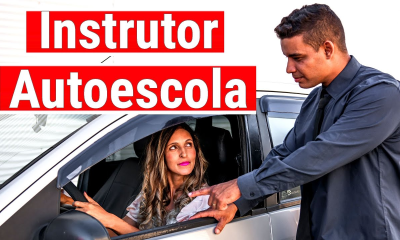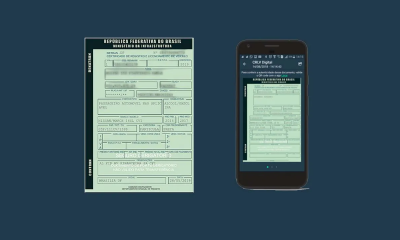Classic Motorcycle Restoration: Reviving a Relic with Expert Tips
Classic motorcycles have a special place in the hearts of many riders. The sleek designs and raw power of these vintage bikes are hard to resist, but finding a well-maintained classic motorcycle can be a challenge. Fortunately, motorcycle restoration is a popular hobby that allows enthusiasts to take old, neglected bikes and turn them into works of art.

Restoring a classic motorcycle involves much more than just polishing the chrome and changing the oil. It requires a deep understanding of the bike’s mechanics and the ability to source and install authentic parts. In this article, we will explore the world of classic motorcycle restoration and provide tips on how to bring a relic back to life.
Whether you’re a seasoned mechanic or a novice enthusiast, restoring a classic motorcycle can be a rewarding experience. By following the right steps and taking the time to do the job properly, you can transform an old, rusty bike into a masterpiece that will turn heads and inspire envy. So, dust off your toolbox and get ready to give a vintage bike new life!
Getting Started with Motorcycle Restoration
Restoring a classic motorcycle can be a rewarding experience, but it can also be a daunting task. Before diving in, it’s important to assess the project and gather the necessary tools and space. Here are some tips to help get started.
Assessing the Project
Before starting any restoration project, it’s important to assess the condition of the motorcycle. This includes evaluating the overall condition of the bike, identifying any missing parts, and determining the level of restoration needed. If the motorcycle is a “basket case” with many missing or damaged parts, the restoration may require more time, money, and experience.
It’s also important to consider the title of the motorcycle. A clear title is necessary for registration and legal ownership. If the title is missing or unclear, it may be difficult to register the motorcycle and may require additional legal steps.
Gathering Tools and Space
Restoring a motorcycle requires a variety of tools and space to work. A garage or workspace is ideal, but any area with enough room to work and store parts can suffice. It’s important to have a clean and organized space to work in, as well as proper lighting and ventilation.
In terms of tools, a basic set of wrenches, sockets, and screwdrivers will be necessary. Specialty tools may also be required depending on the specific motorcycle being restored. It’s important to have a good understanding of how to use the tools and to have some mechanical experience before starting the restoration process.
By assessing the project and gathering the necessary tools and space, restoring a classic motorcycle can be a challenging but rewarding experience.
Disassembly and Inspection
Restoring a classic motorcycle is a labor of love that requires patience and attention to detail. The first step in restoring a motorcycle is to disassemble it and inspect each component for damage or wear. This section will cover the disassembly and inspection process in detail.
Stripping Down to the Frame
The first step in the disassembly process is to remove the bodywork and other non-essential components. This includes the fuel tank, seat, and side covers. Once these components are removed, the motorcycle should be supported on a stand or lift. The wheels, brakes, and suspension components can then be removed.
At this point, the motorcycle should be stripped down to the frame. The frame should be inspected for rust or damage. Any rust should be removed and the frame should be repainted or powder-coated if necessary.
Engine and Mechanical Components
The engine and mechanical components should be removed from the frame and inspected for damage or wear. The engine should be disassembled and each component should be inspected for wear or damage. Any worn or damaged components should be replaced or repaired as necessary. The engine should be cleaned and reassembled with new gaskets and seals.
The transmission, clutch, and other mechanical components should also be inspected for wear or damage. Any worn or damaged components should be replaced or repaired as necessary. The brakes should be inspected and serviced as needed.
Electrical System Overview
The electrical system should be inspected and tested for proper operation. The wiring should be inspected for damage or wear and replaced as necessary. The battery should be tested and replaced if necessary. The ignition system should be inspected and tested for proper operation.
In conclusion, disassembling and inspecting a classic motorcycle is a critical step in the restoration process. By carefully inspecting each component, the restorer can identify any damage or wear and repair or replace the affected parts. This ensures that the motorcycle will be safe and reliable when it is completed.
Restoration Techniques
Restoring a classic motorcycle can be a challenging but rewarding experience. To bring a relic back to life, it is important to have a solid understanding of restoration techniques. This section will cover some of the most common techniques used in classic motorcycle restoration.
Metal Work and Polishing
One of the most important steps in restoring a classic motorcycle is metal work and polishing. This involves removing rust and corrosion from metal parts such as the aluminum frame and rims. A variety of tools and techniques can be used for this, including sandblasting, wire brushing, and chemical treatments. Once the metal is clean, it can be polished to a high shine using a variety of polishing compounds and buffing wheels.
Engine Rebuilding
The engine is the heart of any motorcycle, and restoring it is a critical part of the restoration process. Engine rebuilding involves disassembling the engine, cleaning and inspecting all components, and replacing worn or damaged parts as needed. This may include replacing bearings, pistons, rings, and other internal components. Once the engine is rebuilt, it must be properly tuned and tested before being put back into the motorcycle.
Chassis and Suspension Restoration
The chassis and suspension are critical components of any motorcycle, and restoring them is essential for a safe and reliable ride. This may involve replacing worn or damaged parts such as forks, shocks, and bearings. It may also involve sandblasting and repainting the frame to restore its original appearance. Tires should also be inspected and replaced if necessary, along with the rims and spokes.
In summary, restoring a classic motorcycle requires a combination of metal work, engine rebuilding, and chassis and suspension restoration. By following these techniques, you can give your relic new life and enjoy it for years to come.
Reassembly and Finishing Touches
After the engine parts have been cleaned, repaired, and painted, it’s time to start reassembling the motorcycle. This process involves putting all the pieces back together, including the wiring and electrical components, final assembly, and testing and troubleshooting.
Wiring and Electrical Components
Before reassembling the wiring and electrical components, it’s important to inspect them for any damage or wear. Any damaged or worn components should be replaced with new ones. Once the components have been inspected and replaced, the wiring can be reconnected. It’s important to follow the wiring diagram to ensure that everything is connected correctly.
Final Assembly
The final assembly involves putting all the pieces back together, including the carburetors and tires. The carburetors should be cleaned and inspected before being reinstalled. The tires should also be inspected for any damage or wear and replaced if necessary. Once the carburetors and tires are installed, the rest of the motorcycle can be reassembled.
Testing and Troubleshooting
After the motorcycle has been reassembled, it’s important to test it to ensure that everything is working properly. This involves starting the motorcycle and checking for any leaks or other issues. If any issues are found, they should be addressed immediately.
Overall, reassembling a classic motorcycle can be a complicated process. However, with the right tools and knowledge, it can be a rewarding experience. By following the steps outlined above, anyone can give a relic new life and enjoy the thrill of riding a classic motorcycle.
Frequently Asked Questions
What are the essential steps to begin restoring a vintage motorcycle?
Before beginning a vintage motorcycle restoration project, it is important to have a clear plan of action. This includes assessing the condition of the motorcycle, setting a budget, and creating a timeline for the restoration process. It is also important to have the necessary tools and equipment, as well as knowledge of motorcycle mechanics.
Where can I find parts for discontinued motorcycle models?
Finding parts for discontinued motorcycle models can be a challenge, but there are several options available. Online marketplaces, such as eBay and Craigslist, can be a good place to start. Additionally, there are specialty shops that specialize in vintage motorcycle parts. It is also possible to find parts at motorcycle swap meets and through online forums and communities.
What’s the process for making an old motorcycle shine like new?
To make an old motorcycle shine like new, it is important to start with a thorough cleaning. This includes washing the motorcycle, polishing the chrome, and cleaning the engine and other components. Once the motorcycle is clean, it may be necessary to repair or replace any damaged parts. Finally, a fresh coat of paint or clear coat can help to give the motorcycle a shiny, new appearance.
What should I do with a motorcycle that’s been unused for a long time?
If a motorcycle has been unused for a long time, it is important to assess its condition before attempting to restore it. This includes checking for rust, corrosion, and other damage. Before starting the engine, it may be necessary to clean or replace the fuel system, as well as change the oil and other fluids. It is also important to check the tires, brakes, and other components to ensure they are safe to use.
How difficult is it to completely rebuild an old motorcycle?
Completely rebuilding an old motorcycle can be a challenging and time-consuming process. It requires a thorough understanding of motorcycle mechanics, as well as access to the necessary tools and equipment. It is important to have a clear plan of action and to take the time to properly assess the condition of the motorcycle before beginning the restoration process.
Which classic motorcycles are the best candidates for a restoration project?
The best candidates for a restoration project are classic motorcycles that are rare or have sentimental value. It is also important to choose a motorcycle that is in relatively good condition, as restoring a severely damaged motorcycle can be a difficult and expensive process. Popular classic motorcycles for restoration include Harley-Davidson, Triumph, and Norton models.
-

 Trânsito1 year ago
Trânsito1 year agoMudança ou Adição de Categoria da CNH: Como Fazer e Quais os Requisitos
-

 Trânsito1 year ago
Trânsito1 year agoCadastro de Instrutor de Trânsito: Como Fazer a Inscrição ou Renovação
-

 Trânsito1 year ago
Trânsito1 year agoCNH Digital: Como Funciona e Quais os Benefícios para os Motoristas
-

 Trânsito1 year ago
Trânsito1 year agoCertidão de Prontuário: Tudo sobre a Documentação do Condutor
-

 Trânsito1 year ago
Trânsito1 year agoAlteração de Dados Cadastrais: Como Atualizar as Informações do Veículo ou do Condutor
-

 Trânsito1 year ago
Trânsito1 year agoPerda ou Roubo da CNH: Como Solicitar a 2ª Via pelo Site do DETRAN
-

 Trânsito1 year ago
Trânsito1 year agoTransferência de Veículo: Como Fazer o Registro em Outro Estado ou Município
-

 Trânsito1 year ago
Trânsito1 year agoCRLV Eletrônico: A Nova Era da Documentação Veicular
